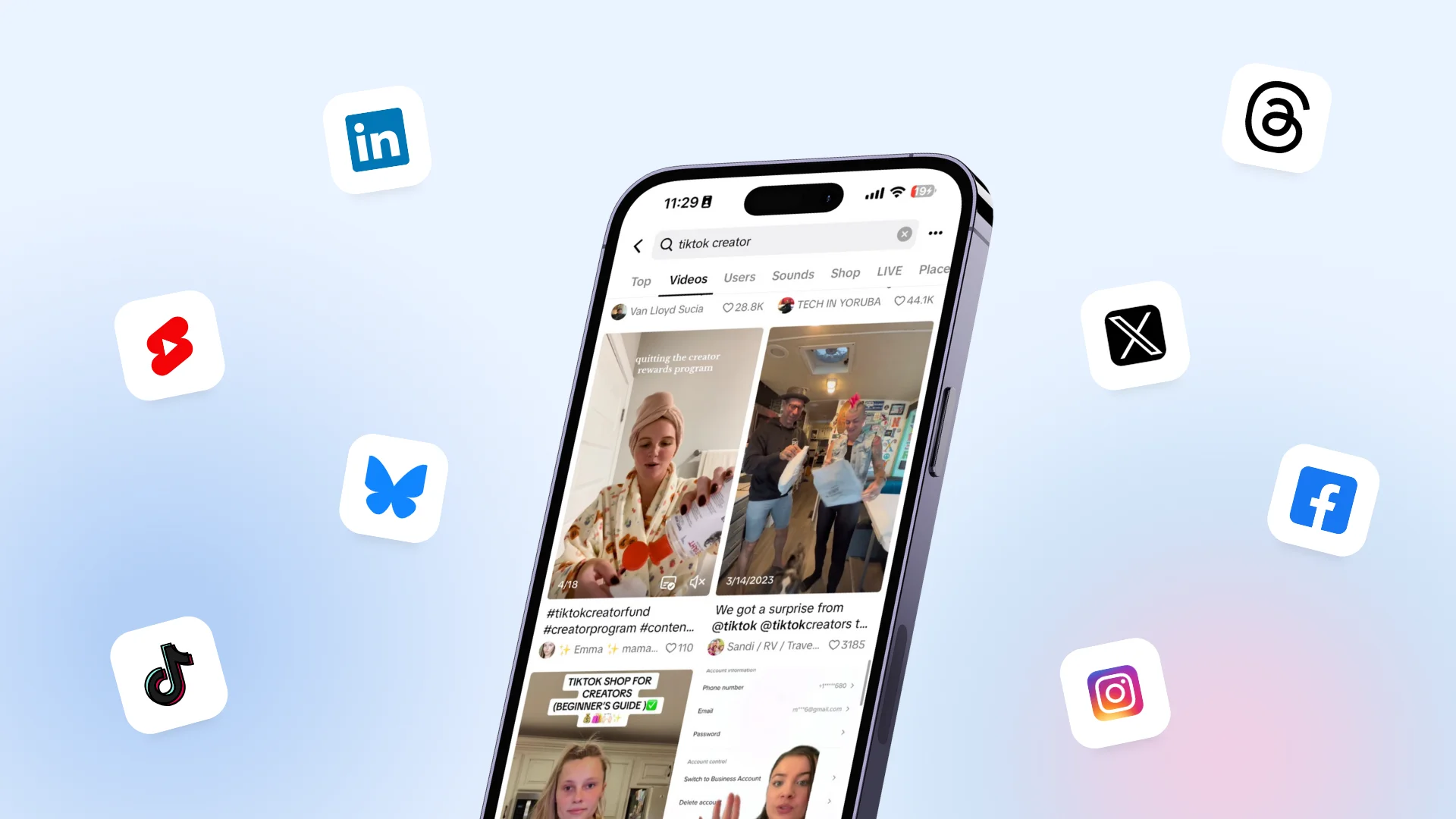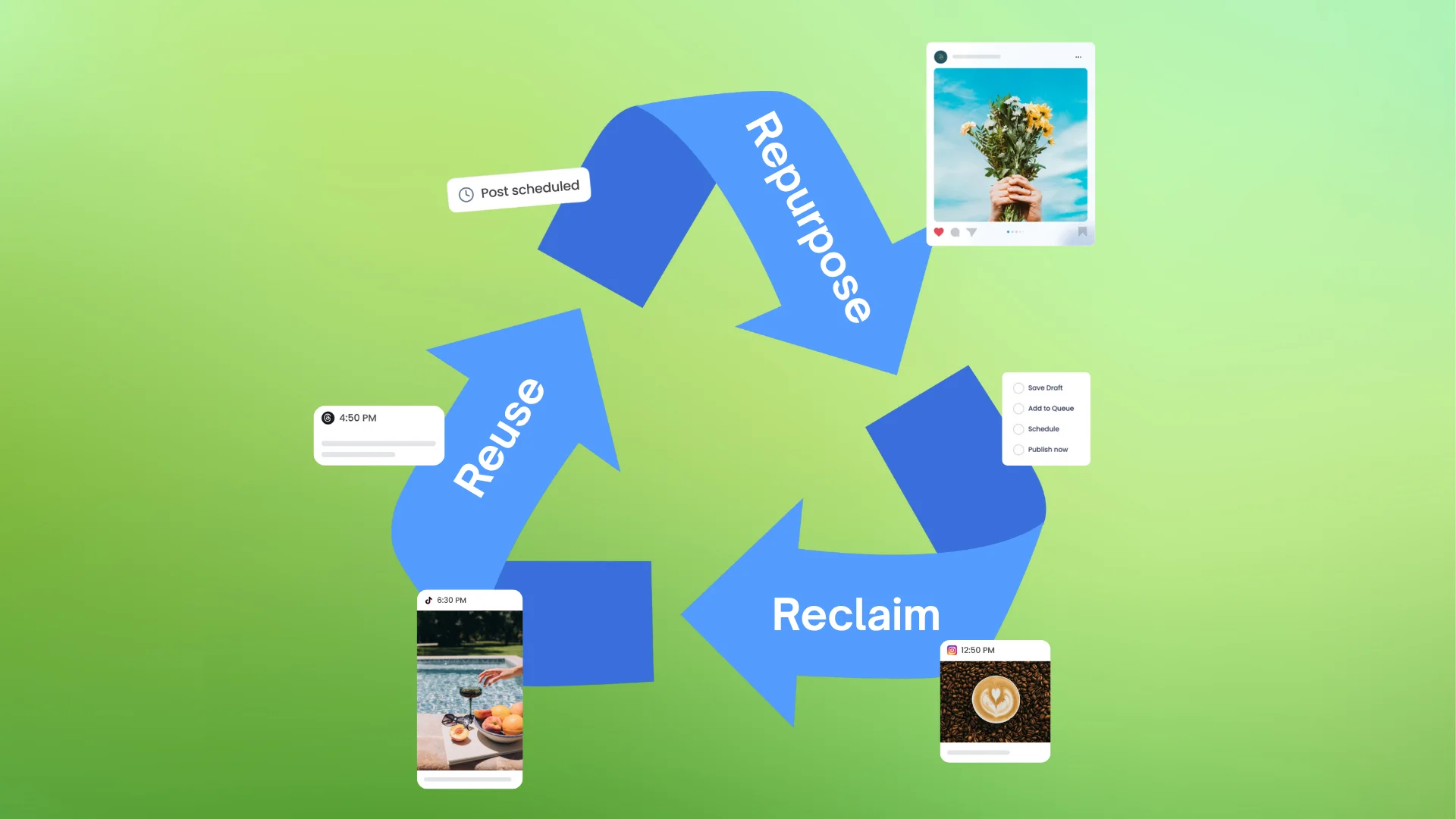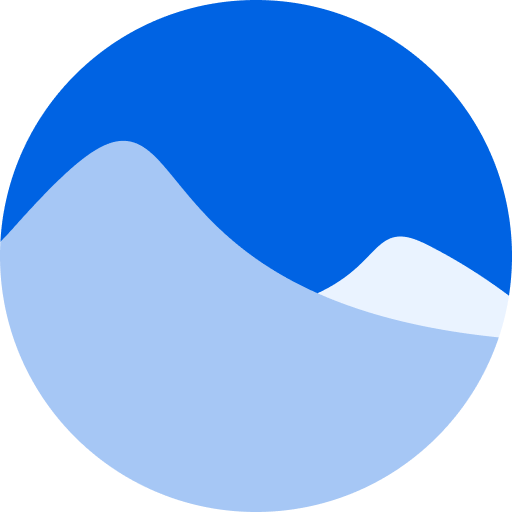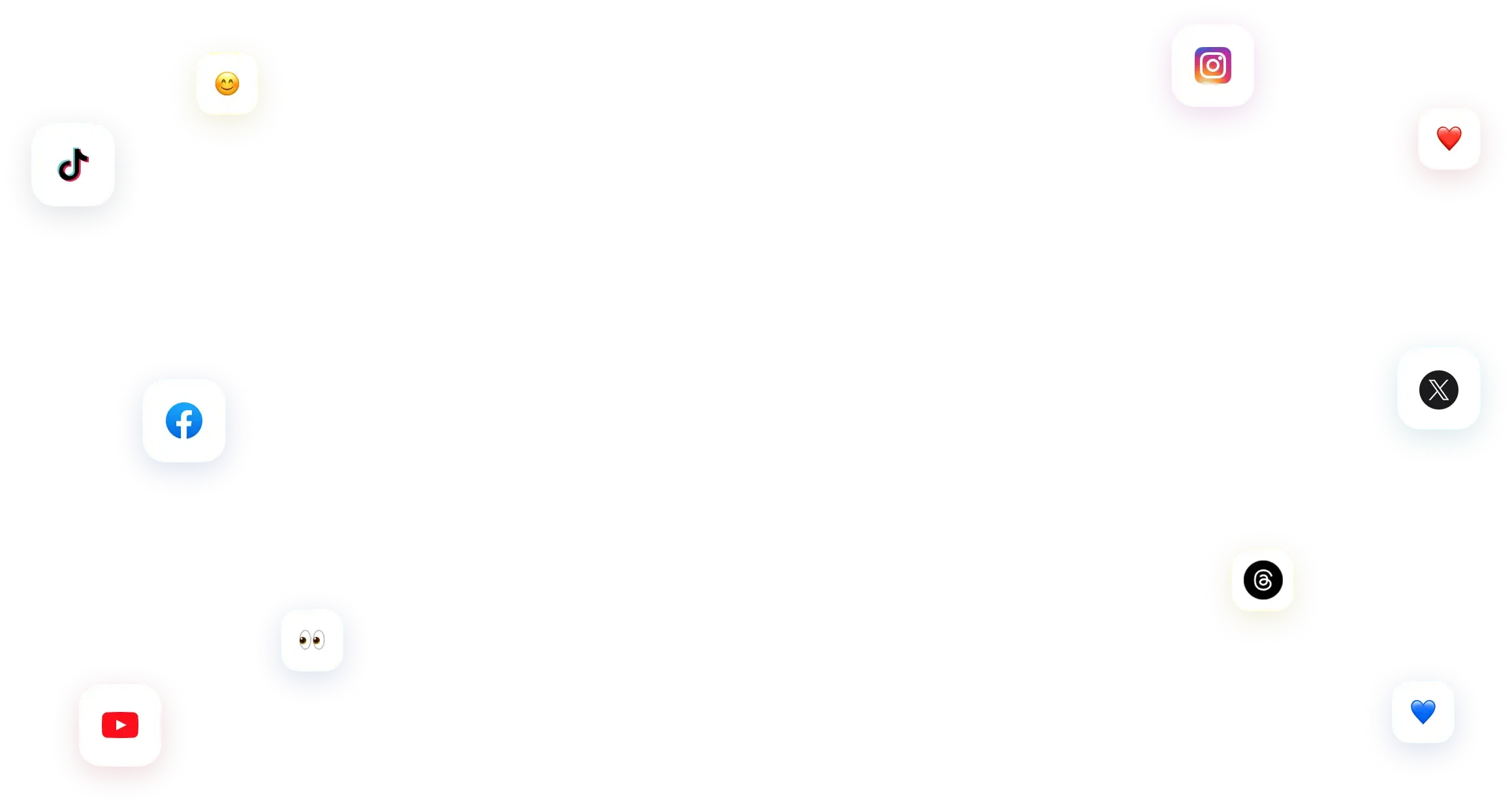New

Turn Your DMs Into Lead Gen!
Learn how to collect lead data from your DMs such as email addresses, phone numbers, and more right from your social inbox. If you are not yet automating your DMs your competitors are outpacing you.

How Something Social Saved 75% of Their Time and Increased Revenue by 15%
See how a fast-growing agency improved operations, cut down hours of manual work, and unlocked new revenue opportunities with Vista Social.
New

50 Unique Social Media Ideas for Consistent Content Creation
Discover 50 unique social media post ideas to engage your audience, grow your brand, and maintain a consistent content strategy with ease!

Mastering Content Reuse: The Key to a Consistent and Sustainable Posting Strategy
Published on May 26, 2025
7 min to read
A Complete Guide to Social Media Content Planning
Summarize with AI


Table of Content

With the average user spending 2 hours and 21 minutes on social media daily, content planning plays a key role in capturing attention during that window. Social media content planning is the process of organizing what, when, and where you’ll post in advance. It helps you stay consistent, save time, and align your content with your goals—while avoiding last-minute stress.
Content planning focuses on execution, like scheduling and managing posts, while content strategy sets the overall direction and purpose behind them. Both work together to drive results.
This planning is essential for businesses, creators, marketers, and agencies. Whether you’re building a brand, promoting products, or growing a personal profile, having a clear content plan keeps your efforts organized, intentional, and effective.
Table of contents
Why Content Planning Is Essential for Social Media Success
Social media content planning makes your workflow easier, keeps you organized and consistent, and helps your brand stay relevant all year long.
- Ensures consistency across platforms: Consistency is key to growing your brand. Social media content planning helps you map out your posts in advance, ensuring a consistent voice, style, and posting schedule across all platforms.
- Saves time and reduces burnout: Planning in advance minimizes the need for last-minute changes, reducing stress and making your workflow more efficient. It also helps prevent creative burnout by giving you more breathing room.
- Aligns content with business goals and campaign: A content plan ensures that every post serves a purpose—whether it’s promoting a product, driving traffic, or supporting a campaign—keeping your strategy focused and aligned with your overall goals.
- Helps you adapt to seasonal trends and platform changes: Planning ahead allows you to create timely content around upcoming holidays, trending topics, or platform updates, helping your brand stay relevant and responsive.
[Must Read: Best Seasonal Content Ideas for Social Media All Year Long]
The Key Elements of a Social Media Content Plan
1. Goals and KPIs
Every successful content plan starts with clear goals. Whether your focus is on building brand awareness, increasing engagement, driving traffic, or boosting sales, your objectives should be specific and measurable. Key Performance Indicators (KPIs) like reach, clicks, shares, or conversions help track your progress. These insights allow you to refine your strategy and stay aligned with your business objectives.
2. Audience Personas
Knowing your audience is important to creating content that connects. Develop detailed personas that include demographics, interests, challenges, and behaviors. This helps you create messages that resonate and address their needs. When you understand who you’re speaking to, your content becomes more relevant and impactful.
3. Content Pillars
Content pillars are the core themes that guide your content creation. They ensure your messaging stays consistent while giving you creative flexibility. Choose 3–5 topics that align with your brand and matter to your audience—for example, tips, behind-the-scenes, testimonials, or product education. These pillars help you stay organized and maintain a strong brand identity.
4. Content Formats and Platforms
Different types of content perform better on different platforms. For example, short videos work well on TikTok and Instagram Reels, while long-form posts or carousels may do better on LinkedIn or Facebook. Choose formats that best communicate your message and match your audience’s habits. Tailoring your content to each platform boosts visibility, engagement, and overall performance.
How to Build a Social Media Content Calendar
- Weekly vs. monthly planning: Building your content calendar starts with planning it thoroughly. Weekly planning and monthly planning plays differently, weekly planning offers flexibility which allows you to make quick adjustments, while monthly planning helps you stay ahead knowing the bigger picture. Many brands use a mix of both, monthly for strategy and weekly for execution.
- How far ahead you should plan: A good rule of thumb is to plan your content 2–4 weeks in advance. This gives you enough time to create high-quality posts without feeling rushed, while still leaving room for spontaneous content. It also allows you to respond to feedback, avoid sounding too robotic, and maintain a consistent posting schedule without gaps.
- Integrating key dates: holidays, campaigns, launches: Planning months ahead is especially useful when it comes to key dates. Your content calendar should include important moments like holidays, seasonal events, major product launches, and special campaigns. These are great opportunities to boost visibility and ensure your content stays aligned with your brand goals. By planning around these key moments well in advance, your brand stays timely, organized, and relevant—without the last-minute scramble.
- Tools to use: Vista Social, Google Sheets, Notion, Airtable, Canva, etc…: There are tools like VistaSocial, Google Sheets, Notion, Airtable, or Canva that can help you with your social media content planning, design your campaigns, and manage your calendar. Choose that fits your workflow, some people might prefer simple spreadsheets, while others benefit from all-in-one planners.
- Sample calendar structure: A basic content calendar can be organized by date, platform, content type, caption, asset link, and status (draft, scheduled, published). This structure keeps everything clear at a glance. You can visualize it in a table format or create a downloadable template for easier reuse and team sharing.
[Must Read: Shared Calendar The Ultimate Social Media Content Planner]
Try Vista Social for Free
A social media management platform that actually helps you grow with easy-to-use content planning, scheduling, engagement and analytics tools.
Get Started NowCreating High-Impact Content: Tips and Best Practices
- Write scroll-stopping hooks and CTAs: The first few words matter, getting the attention of users sparks curiosity making them stay to see more. Follow up with clear calls-to-action (CTAs) that guide your audience—whether it’s to like, comment, share, or click.
- Keep visuals on-brand and platform-optimized: Use consistent colors, fonts, and styles that reflect your brand identity. Make sure your visuals are sized correctly for each platform (e.g., vertical videos for Reels and TikToks, square images for Instagram). High-quality, platform-optimized visuals boost credibility and engagement.
[Must Read: TikTok Dimensions: Everything You Need to Know]
- Mix promotional, educational, and engaging content: Avoid being too salesy all the time. A healthy content mix keeps your audience interested—share helpful tips, relatable moments, behind-the-scenes clips, and occasional promotions. This balance will help you build trust and keep followers engaged.
- Repurpose top-performing posts: Don’t reinvent the wheel. Look at what has performed well in the past and rework it into new formats—turn a blog post into a carousel, a popular Reel into a quote graphic, or an FAQ into a short video. Repurposing extends the value of your best content.
- Use storytelling frameworks like PAS or AIDA: Use proven structures like PAS (Problem, Agitate, Solution) or AIDA (Attention, Interest, Desire, Action) to make your content more persuasive. These structure will help guide your audience through a clear journey and make your message stick.
- Donts of content planning
A. Planning too rigidly with no room for real-time content: Being overly strict with your calendar can make your content feel outdated or out of touch. Leave space for trending topics, spontaneous updates, or breaking news.
B. Not aligning content with business goals: Knowing your goal is essential. Posting just to fill up the calendar can lead to wasted time and effort. Always connect your content to clear objectives—whether it’s driving traffic, building a community, or boosting sales.
C. Overlooking platform-specific nuances: Not all platforms are the same—what works on one might fail on another. To get the best results, tailor your tone, content format, and posting time to fit each specific channel.
D. Ignoring analytics after posting: Posting is only half the job—tracking performance is crucial. Use insights to learn what’s working and adjust your strategy accordingly.
[Must Read: Visual Content Creation Tips & Tools for Agencies this 2025]
How Vista Social Simplifies Content Planning
Vista Social is an all-in-one management tool that helps you simplify content planning with AI-powered content ideas and smart scheduling tools that will save your time and boost consistency. With its cross-platform calendar it gives you a clear overview of all scheduled posts, making it easy to manage your strategy.
With built-in team collaboration and approval workflows, you can streamline content creation and ensure brand alignment. Performance analytics help you track results and refine your strategy, while the auto-rescheduling feature keeps your evergreen content working for you without extra effort.
Plan With Purpose, Post With Impact
Proactive social media content planning is the foundation of social media success. It helps you stay consistent with your posts, stay on track with your goals, and be ready for trends—all while saving time and reducing stress. By using helpful tools, checking your results, and following a clear schedule, you can create a more focused and effective content strategy. Content planning isn’t about holding back creativity—it’s about making room for it. When you plan ahead, you give yourself both the freedom to be creative and the direction to stay strategic.
P.S. New around here? Vista Social is an all-in-one social media management platform built for marketing agencies, freelancers, and social media managers. Our powerful features are designed to boost collaboration, streamline workflows, and drive better results.
Sign up today and see how Vista Social can elevate your social media strategy!
FAQs About Social Media Content Planning
How far in advance should I plan my social media content?
Ideally, plan your content at least 2–4 weeks ahead. This gives you enough time to stay consistent, align with campaigns, and adjust for trends or changes if needed.
Can I reuse old content in my plan?
Yes! Repurposing top-performing or evergreen content is a smart way to save time and reinforce key messages. Just make sure to refresh it for relevance or update visuals.
What’s the difference between a content calendar and a social media strategy?
A content calendar is a scheduling tool that outlines what and when you’ll post. A social media strategy is the bigger picture—it defines your goals, audience, messaging, and platform approach. The strategy guides the calendar.
About the Author
Content Writer
Content writer and copywriter with over 2 years of experience, specializing in VSL scriptwriting. I’ve worked with various brands to create compelling content. Passionate about storytelling that connects and converts. Loves cats, poetry, and skincare
Read with AI
Save time reading this article using your favorite AI tool
Summarize with AI
Never Miss a Trend
Our newsletter is packed with the hottest posts and latest news in social media.

You have many things to do.
Let us help you with social media.
Use our free plan to build momentum for your social media presence.
Or skip ahead and try our paid plan to scale your social media efforts.
P.S. It will be a piece of cake 🍰 with Vista Social
Subscribe to our Newsletter!
To stay updated on the latest and greatest Social Media news. We promise not to spam you!


